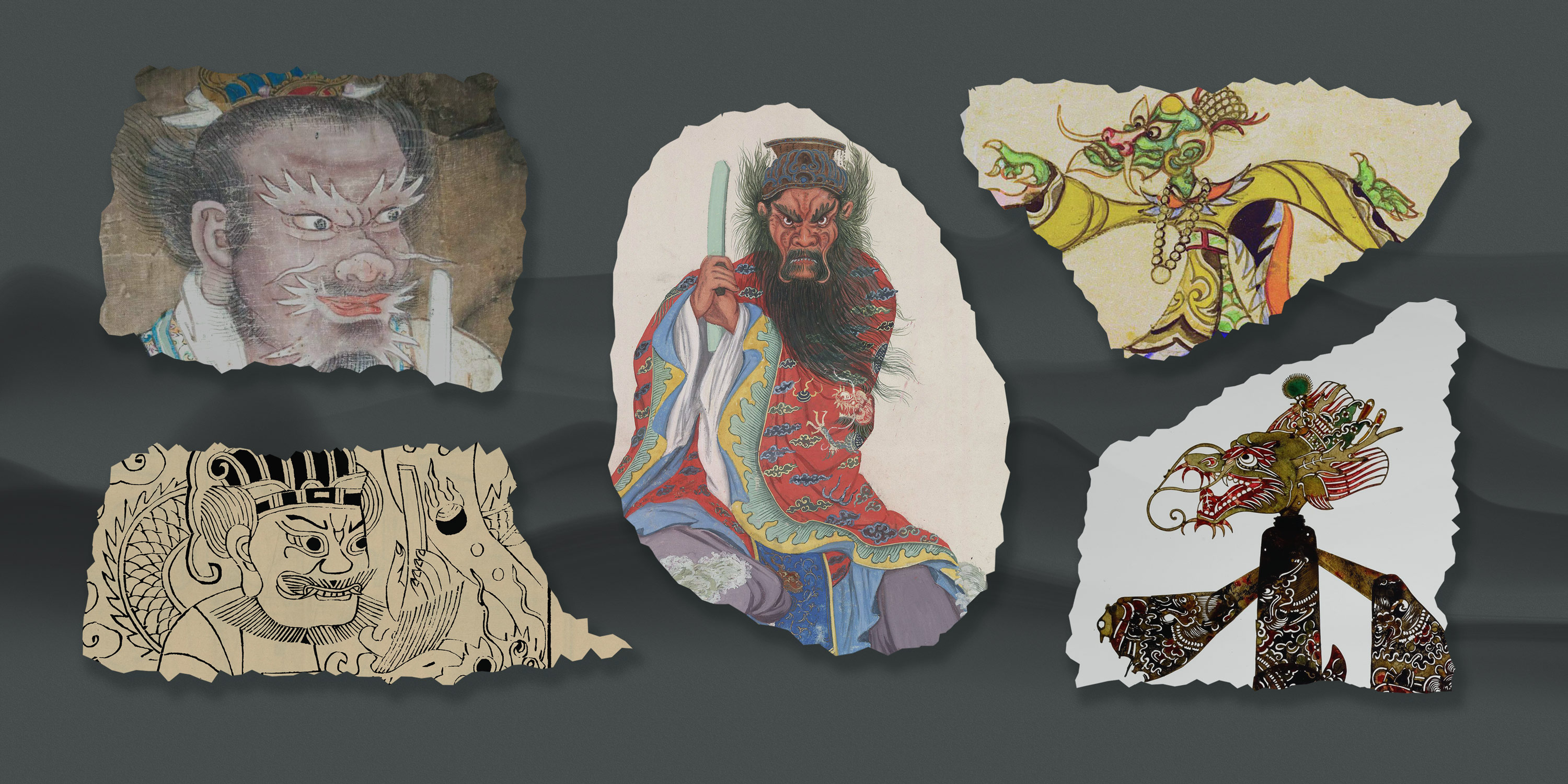
How the Dragon King Emerged From the Waves
Of the 12 animals in the Chinese zodiac, the dragon, or loong, is the only one that doesn’t exist in the real world. Its inclusion highlights the magical creature’s status in Chinese culture, yet few might be aware of its more divine qualities.
In ancient Chinese mythology, the dragon was a powerful rainmaker. During the Han dynasty (202 B.C.–220 A.D.), people made clay dragons to use in rituals to pray for rainfall. Over time, these local customs merged with the Buddhist concept of the Dragon King, who people began to worship as the God of Water, replacing the previous deity Hebo, Lord of the Yellow River.
Paying tribute to the Dragon King became part of the spiritual ceremonies led by rulers in the Tang dynasty (618–907), with the practice quickly spreading through the Central Plains.
According to legend, the Dragon King rules over all creatures in the sea, commanding armies of shrimps and crabs, and controls the weather on land. Yet, rather than a single deity, he is a legion. Wherever there is water — be it a lake, river, sea, or spring — there resides a Dragon King. The most prominent among them are the Dragon Kings of the Four Seas, who appear in the Chinese classic “Journey to the West” as Ao Guang of the East Sea, Ao Qin of the South Sea, Ao Shun of the North Sea, and Ao Run of the West Sea.
In coastal areas, fishermen will offer sacrifices to the Dragon King as they pray to increase their haul. Farmers toiling inland will do the same in the hope he will bring rain during the planting season, ensuring a good harvest.
Some have special duties, such as the Golden Dragon King, the protector of ships, who is worshipped predominantly in the lower reaches of the Yellow River and along the north-to-south Grand Canal. In folklore, this god was originally a righteous man called Xie Xu, who transformed into a dragon to prevent a devastating flood when the Yellow River burst its banks during the Southern Song dynasty (1127–1279).
The central section of the Grand Canal is also home to the Water-Dividing Dragon King. He emerged in the Ming dynasty (1368–1644) during a major project to divert water from the Wen River, now known as the Dawen River and located in modern-day Shandong province, to help maintain the canal’s water level and ensure a steady transportation link. Although a feat of human engineering, locals believed a god was needed to oversee daily operations.
Even wells and mountain springs had their own Dragon King. Despite their small area of jurisdiction, these deities were seen by villagers to play an essential role in guaranteeing abundant and disease-free water supplies.
Using a printing technique with wood engravings known as zhima, ancient Chinese artists often depicted the Dragon King in a crown and elegant robe, holding an ivory tablet or other artifacts, like that of earthly royalty. However, his face would be that of a dragon; fanged, mouth agape, with wild staring eyes. Surrounding would be nature spirits, the Buddhist yaksha, who support the running of his palace.
In some images, the deity appears in human form, looking more like an imperial official, although he’s sometimes riding a dragon, revealing his mythical status. Other works feature him in a snake-like form, with bared teeth and sharp claws, leaping from the waves as he rules over his dominion. These zhima prints were burned as sacrifices, hung inside a ship’s cabin, put up in homes, or placed outside wells and water tanks as a prayer for protection.
The sacred nature that dragons developed in ancient mythology highlights the reliance China’s traditional agrarian societies had on water for survival. Even today, belief in the Dragon King endures, as some continue to pay tribute in the hope of summoning rain or guaranteeing safe passage over water.
Translator: Chu Jing Her; editors: Ding Yining and Hao Qibao.
(Header and in-text images: All the images are from the public domain, collected and provided by Sheng Wenqiang unless otherwise noted.)










